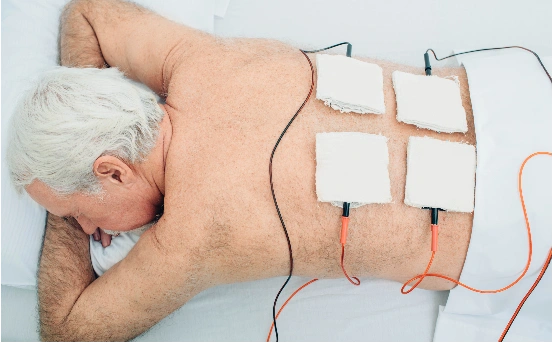Diagnosis for discectomy surgery is a common spinal procedure performed to relieve nerve compression caused by a herniated or degenerated disc. But before any surgical intervention, an accurate diagnosis is crucial. Understanding the right time for discectomy and what diagnostic steps are necessary is essential for patients experiencing persistent back pain, leg pain, or neurological symptoms.
Discectomy is a specialized surgical technique used to remove the portion of a herniated or bulging disc that is pressing on a nerve root or the spinal cord. It is most commonly performed on the lumbar spine but may also be required in the cervical or thoracic spine. The surgery provides relief from symptoms like chronic back pain, sciatica, and neurological deficits, restoring function and improving quality of life.
What Is Discectomy Surgery?
Discectomy is a surgical procedure that involves removing the damaged portion of a herniated or slipped disc in the spine. It is most commonly performed on the lumbar spine (lower back) but can also be done on the cervical (neck) or thoracic (mid-back) regions. The main goal is to relieve pressure on spinal nerves, which can cause pain, numbness, or weakness.
Common Symptoms Leading to a Discectomy Evaluation
Many patients consider discectomy surgery only after conservative treatments like physiotherapy, pain medications, or lifestyle changes have failed. Recognizing the symptoms early can help prevent complications. The common symptoms that warrant further evaluation include :-
-
Persistent lower back pain
-
Sciatica or leg pain radiating from the lower back
-
Tingling or numbness in legs or arms
-
Weakness in the limbs
-
Loss of bladder or bowel control (in severe cases)
These symptoms may indicate nerve root compression due to a herniated disc, which might require surgical correction through discectomy.
Step-by-Step Diagnosis for Discectomy Surgery
Getting an accurate diagnosis is critical before undergoing any surgical procedure. Here’s a detailed step-by-step look at how discectomy surgery is diagnosed :-
Initial Consultation and Medical History
The first step is a detailed discussion with your orthopedic or spine specialist. During this consultation, the doctor will assess :-
-
Duration and nature of the pain
-
Any history of injury or trauma
-
Impact on daily life and mobility
-
Previous treatments and their outcomes
This helps determine whether the symptoms are mechanical (related to movement) or neurological (nerve-related), which is crucial for planning further tests.
Physical Examination
A thorough physical exam helps evaluate spinal function, reflexes, and muscle strength. The physician may perform:
-
Neurological tests to check reflexes, muscle strength, and sensation
-
Straight leg raise test to identify nerve root irritation
-
Posture and gait analysis to assess spinal alignment and nerve function
This clinical examination often provides the first clues that the problem may lie in a herniated disc affecting spinal nerves.
Imaging Tests
To confirm the diagnosis and precisely locate the herniated disc, doctors recommend advanced imaging techniques. These include :-
- MRI (Magnetic Resonance Imaging)
-
Most definitive imaging test for disc herniation
-
Shows soft tissues, spinal cord, nerves, and discs clearly
-
Helps identify the size and location of the herniation
- CT Scan (Computed Tomography)
-
Used if MRI is not possible (e.g., patients with metal implants or pacemakers)
-
Offers detailed images of bones and disc spaces
- X-rays
-
Helpful for ruling out other conditions like fractures or spinal instability
-
Doesn’t show soft tissues but may show disc space narrowing or bone spurs
- Myelogram
-
A special X-ray with contrast dye injected into the spinal canal
-
Useful for evaluating nerve compression when MRI results are inconclusive
Electrodiagnostic Tests (if needed)
If nerve damage is suspected or symptoms are severe, your doctor might order tests like :-
- EMG (Electromyography)
-
Assesses the electrical activity of muscles
-
Helps identify specific nerve root involvement
- Nerve Conduction Studies
-
Measures the speed and strength of signals traveling through your nerves
-
Useful in differentiating between spinal nerve problems and other nerve conditions (like peripheral neuropathy)
When Is Discectomy Surgery Recommended?
Not all herniated discs require surgery. Most patients improve with non-surgical treatments such as rest, medication, physical therapy, and spinal injections. However, discectomy surgery is typically recommended if :-
-
Pain persists for more than 6–8 weeks despite conservative treatment
-
There is progressive muscle weakness or neurological deficit
-
Imaging confirms nerve compression from a herniated disc
-
You experience severe pain that significantly affects quality of life
-
You develop cauda equina syndrome (a medical emergency with bladder/bowel dysfunction)
A combination of clinical symptoms and diagnostic imaging results determines whether discectomy is the right option for you.
Types of Discectomy Procedures
After confirming the diagnosis, the surgeon will discuss the appropriate surgical method based on the location and severity of the herniated disc. Common procedures include :-
-
Microdiscectomy :- Minimally invasive, small incision, faster recovery
-
Open discectomy :- Traditional method, more extensive exposure
-
Endoscopic discectomy :- Performed using an endoscope, less tissue damage
Pre-Surgical Evaluations
Before proceeding to surgery, a few additional evaluations may be needed :-
-
Blood tests :- To rule out infection or anemia
-
ECG or chest X-ray :- For cardiac and lung health assessment
-
Anesthesia clearance :- To ensure fitness for surgery
These tests help ensure a safe surgical experience and reduce the risk of complications.
Surgery or Continued Conservative Care?
Even with a confirmed diagnosis, surgery is a major step. Your doctor will weigh several factors :-
-
Age and overall health
-
Severity of symptoms
-
Response to previous treatments
-
Work and lifestyle factors
-
Your personal preferences
In some cases, continued non-surgical care may still be the better option, especially if symptoms are manageable.
Conclusion
Discectomy surgery can offer lasting relief for patients suffering from nerve compression due to herniated discs, but an accurate diagnosis is the cornerstone of successful treatment. From initial consultation to advanced imaging, every step in the diagnostic process helps ensure that surgery is truly necessary and will be beneficial.























